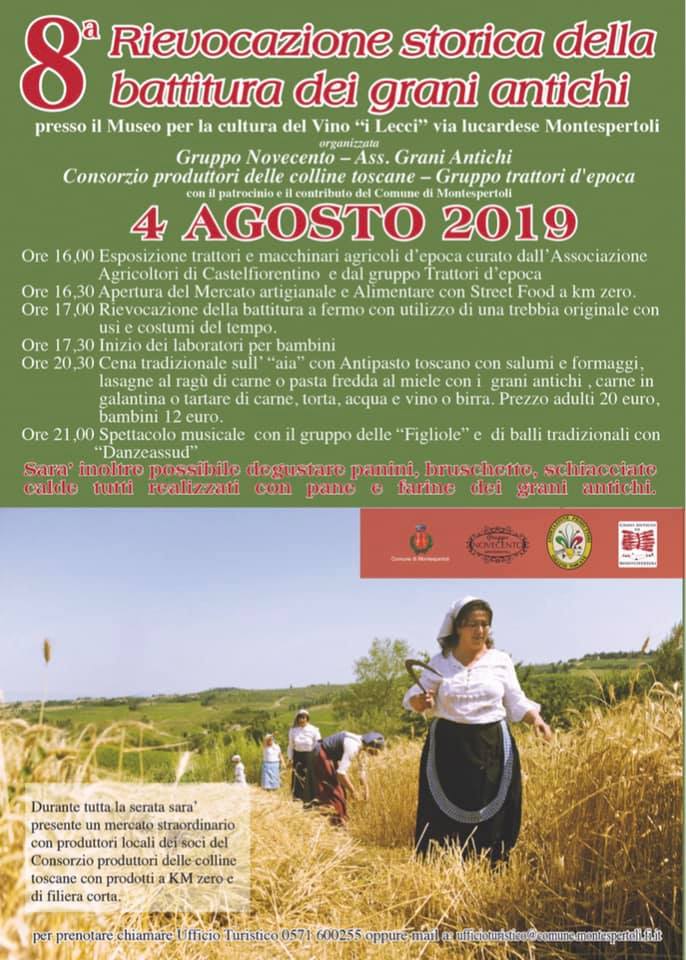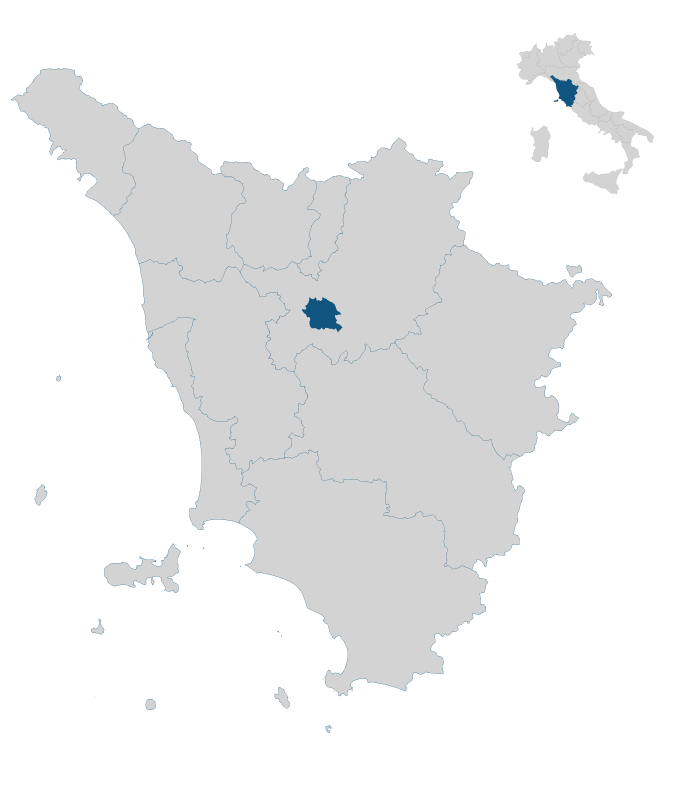Wheat threshing festival
This is custom heading element
When
August
Typology
Re-enactment
Main activities
+ Wheat threshing re-enactment
+ Tastings
+ Entertainment
Wheat threshing was one of the most important moments of the year for the farmers . At this stage all the hard work done in the fields began to turn in bread for the following winter. The threshing would then turn into an actual celebration, a meeting place for the farm families, with folk food, singing and story telling. This is to be considered the barnyard wake par excellence.
Before starting the threshing, the peasants had to perform a number of tasks . After harvesting the wheat they had to collect it in haystacks, large bundles of wheat stalks that nowadays can often be seen in the romantic (and nostalgic) images of the Tuscan countryside. Later on the haystacks were gathered on the farmyard and stacked to build the so-called “wheat boat”. Finally came the threshing machine that separated the straw from the grains which were safely stocked in the barn before being taken to the mill for the grinding.
From the sixties, with the growing mechanization and industrialization of agriculture , the thresher has been progressively replaced by the combine harvester, which reaps and threshers all at once. This is the reason why the wheat threshing celebration has become a festival where the historical reenactment is performed.
But it shouldn’t be thought of just as a picturesque ritual of the past, since the festival holds the roots of the farming culture , of good food and of the importance of coming together and celebrating the passing of the seasons. Moreover, after some decades the enthusiasm for industrial agriculture have deflated and we are now rediscovering the value of the old ways which risked, and still are at risk of being swept away by the industrialization of agricolture.

Ancient grains are a good example of this process of rediscovery : up until the 1960’s these variety of grains were locally widespread and have then been replaced by modern varieties which have been selected to meet the criteria of the contemporary food industry: low in size, highly productive, high gluten content for easier and faster processing. Now that the nutritional and environmental problems linked to this choice have been highlighted, some farmers and bakers are bringing the ancient varieties back in the fields and on the tables, trying, not without difficulty, to explain why they are preferable and also why it is right that the their price is higher than that ordinary grains.
The Ancient Grains Association of Montespertoli is doing a fundamental work of dissemination and of coordination of producers: Montespertoli is becoming a benchmark on this issue and a prime example experience.
Gallery
The poster

Map
In the heart of Tuscany

